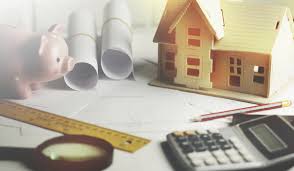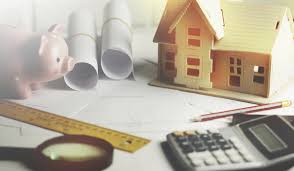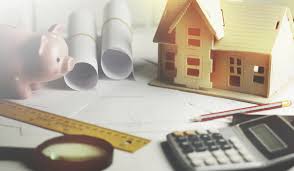While buying under-construction properties, home buyers need to be extra vigilant about the processes and guidelines that banks follow while disbursing loans.
A minor miscalculation if ignored, can hinder your future loan disbursements.
Inspite of the builder raising a demand for payment, the bank has all the right to refuse disbursement if any of their critical conditions are not met.
Hence, in this chapter, we will discuss all such criteria and calculations that banks take into account while disbursing loans on under-construction properties.
So, the next time you find yourself in a similar situation, you will be much more prepared and ready with the alternatives and ensure that your disbursements are not denied.
In some of the other chapters, we have already discussed how banks sanction loans.
Now let’s go a little deeper and understand the process that banks follow while disbursing loans on under-construction properties.
To begin with, you must note the following data points that banks consider while disbursing loans on under construction properties:
1) Sanctioned loan limit.
2) Self-Contribution.
3) The construction stage of the property.
Builders these days offer a variety of payment plans to lure buyers and to make them invest in their projects.
One of the most common plans that most buyers opt for is “Parallel Funding”.
In this chapter, we will discuss how loans under “Parallel funding” are disbursed.
Every time the builder raises a demand for payment, the bank would expect you to clear your share of the contribution first and then reach out to them for disbursing their share.
For this, they will also demand to see your bank statement and payment receipts to validate the transaction.
Let us use the following example to help you understand it better:
Assuming, you have booked an apartment in an under-construction project for ₹1,00,00,000/-.
For this, you have availed a home loan worth ₹80,00,000/- while the remaining ₹20,00,000/- you plan to contribute by yourself.
In this case, the total cost of the property is ₹1,00,00,000/-, the sanctioned loan limit is ₹80,00,000/- and the self-contribution is ₹20,00,000/-
In other words, 80% of the property cost will be funded via a bank loan while the remaining 20% will come from your savings.
Now, assuming your builder raises a demand for ₹10,00,000/-, that is 10% of the total cost of the property.
Now, this is how the calculation will work.
Most home buyers at this stage completely misunderstand the process.
They assume that the bank will continue to clear all of the builder’s demands until the loan limit of ₹80,00,000/- is exhausted.
Only after that will their contribution of ₹20,00,000/- come into play.
If your calculations are based on this notion then you’re surely headed for disaster because this is not how banks disburse loans.
Before you even approach the bank for disbursement, you will have to clear your share of payment first i.e. 10% x ₹20,00,000/- = ₹2,00,000/-.
Once you make the payment, the bank will then verify the transaction with your bank statement & the payment receipt and match it with the payment plan being provided by the builder.
Only after they are satisfied with all of the above conditions, they will agree to release their share of payment i.e. 10% x ₹80,00,000/- = ₹8,00,000/-.
Hold on. This is not it.
Before the bank actually releases the payment into the builder’s account, there is another document that they would want to check.
And that is the builder’s “Architect certificate”.
This is to ensure that the builder’s demand is falling in line with the construction stage of the property.
Builders, under normal circumstances, cannot demand more than what they have delivered.
Before raising a payment demand for 10%, the architect of the property must also certify that 10% of the total construction has been completed.
Once all of these conditions are satisfied (Self contribution and Property construction stage) the bank will then disburse the loan and release 10% of their contribution into the builder’s account.
So both parties (the home buyer and the bank) collectively pay the builder his ₹10,00,000/-.
This is how the process will work every time the builder raises a demand for payment.
The process may look a little complicated but there is no choice.
Every home buyer is expected to know these rules to avoid any conflicts later when they can do nothing about it.
DOCUMENTS REQUIRED BY BANKS FOR MAKING PART-DISBURSEMENTS
The below set of documents is required to be submitted to the bank whenever a payment demand is raised by the builder.
• An original demand letter from the builder.
• Latest architect certificate.
• Original payment receipt of the previous disbursement done by the bank.
• Bank statement reflecting margin money payment.
• Disbursement application form in the bank’s format.










Leave a Reply
You must Login for Leave a Reply.
Comments (0)